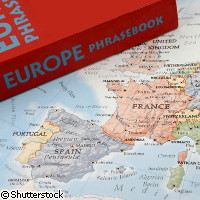EU funds effective translation tool
Europeans recognise the importance of communicating in other languages as well as their native tongue, and the availability of effective tools facilitating high-quality translation of texts between multiple languages is pivotal to this. Enter the MOLTO ('Multilingual on-line translation') project, which has received over EUR 2.3 million under the 'Information and communication technologies' Theme of the Seventh Framework Programme (FP7) to develop such a reliable translation tool. The MOLTO project partners said the languages will function as separate and varied modules in the tool. The five-strong consortium, which is being coordinated by the University of Gothenburg in Sweden, will develop prototypes that cover most of the EU's 23 official languages. In a statement, the university said the MOLTO project seeks to provide the same access to knowledge on the Internet for all EU citizens. 'It has so far been impossible to produce a translation tool that covers entire languages,' explained project leader Professor Aarne Ranta from the Department of Computer Science and Engineering at the University of Gothenburg. A number of online translation tools are currently available to the public. Google Translator, a programme that is used by many people worldwide, for example, gradually improves the quality of translations through machine learning: the system uses feedback to learn from its own mistakes. The disadvantage is that explicit grammatical rules are the exception rather than the rule. This is where MOLTO comes in. The project partners will develop a system with precision and grammar rules in place. According to the consortium, wide coverage will follow. 'We wanted to work with a translation technique that is so accurate that people who produce texts can use our translations directly,' said Professor Ranta. 'We have now started to move from precision to increased coverage, meaning that we have started to add more languages to the tool and database.' The consortium wants to develop a system that can suit various application areas. The translation of patent description is one such area; Europeans and people from other countries should be able to use this innovative technology without being fluent in the language in which the patent description is written, the researchers said. Another area is the translation of mathematical teaching material; the MOLTO partners will kick-start a sub-project that targets the translation needs of mathematicians. Also on their to-do list is the translation of descriptions of cultural heritage and museum objects. The researchers pointed out that everyone should have access to these descriptions regardless of linguistic scope. 'The purpose of the EU grant is to enable us to use the MOLTO technology to create a system that can be used for translation on the Internet,' Professor Ranta underlined. 'The plan is that producers of Web pages should be able to freely download the tool and translate texts into several languages simultaneously. Although the technology does exist already, it is quite cumbersome to use unless you are a computer scientist,' he added. 'In a nutshell, the EU gives us money to modify the tool and make it user-friendly for a large number of users'. Scheduled to end in February 2013, MOLTO brings together researchers and industry partners from Bulgaria, Spain, Austria, Finland, and Sweden.
Countries
Austria, Bulgaria, Spain, Finland, Sweden



